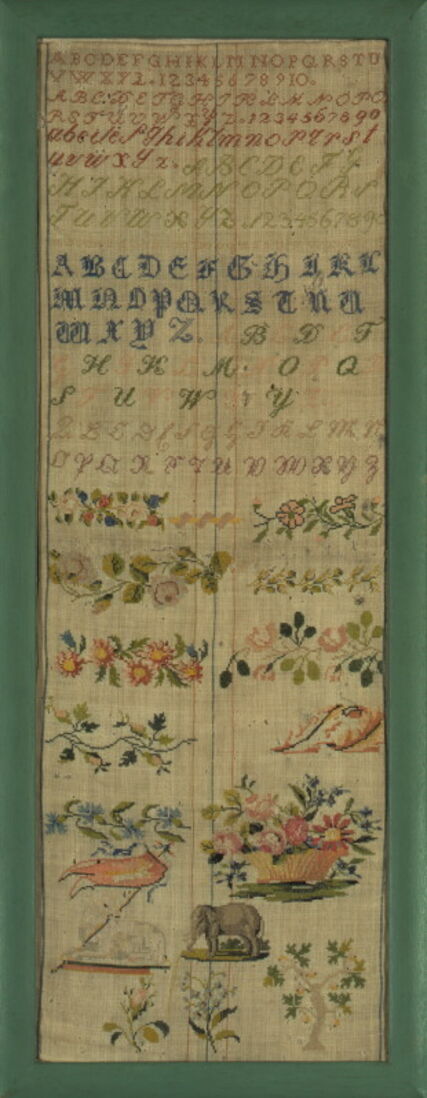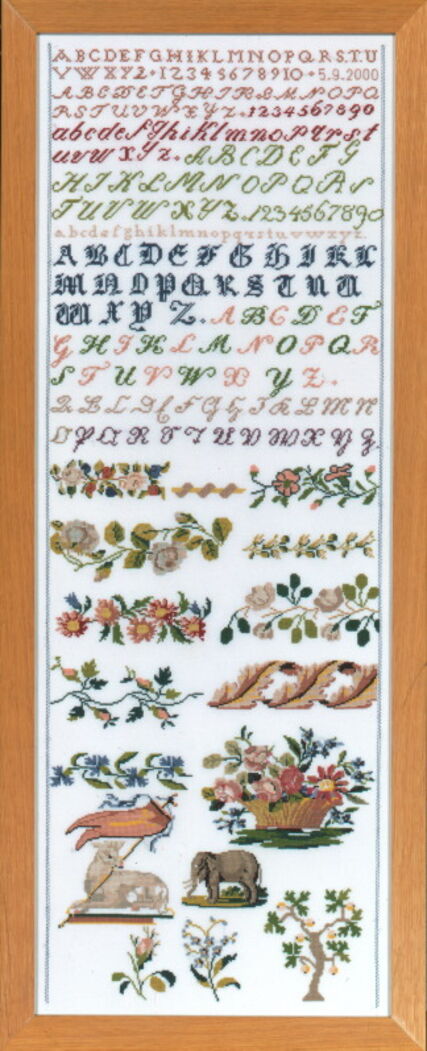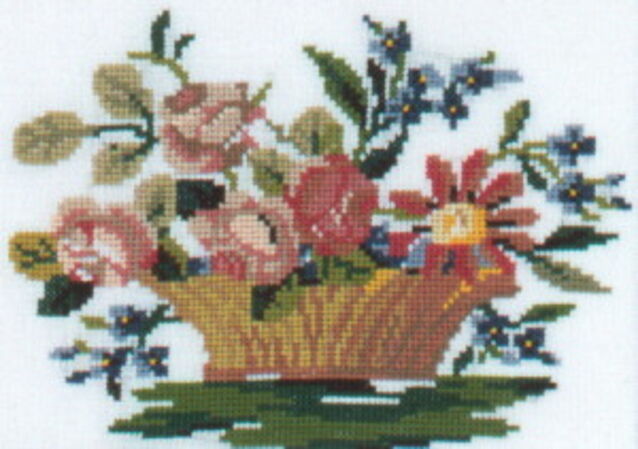Biedermeier 1840


Have you already purchased a sampler at a public auction? My friend Marina was in love with the flower basket, I only looked at the cute little elephant. An exciting affair: from the personal survey to fixing the final amount. Acceptance of our bid!
This sampler has no name and no date. The beautiful, lush flower basket and the many tendrils point to the classification to the romantic period between the years 1815 and 1848, the so-called Biedermeier period. The existence of similar samplers from Austria in various museums allows classifying the piece as an Austrian sampler.
The presumably young – and rather inexperienced – girl stitched eight alphabets in silk on her relatively coarse fabric, one actually in the German kurrent handwriting. This current/cursive script was written in the 18th and 19 century, in contrast to the engrossing hand which was commonly used for official documents. This script was called German handwriting in Austria.
The needleworker became more courageous in the variety of colours with every border. She seemed to have had a great pleasure particularly in the nice flower basket and the little elephant worked in shades of grey. The paschal lamb is designed as a "counterpart".
For the bottom section, she chose three upright motifs: a rosebud, the forget-me-not and the traditional tree of life - here with small apples.
Crosses: 199 x 559
Size: 28,5 x 80 cm
Stitches: Cross stitch
